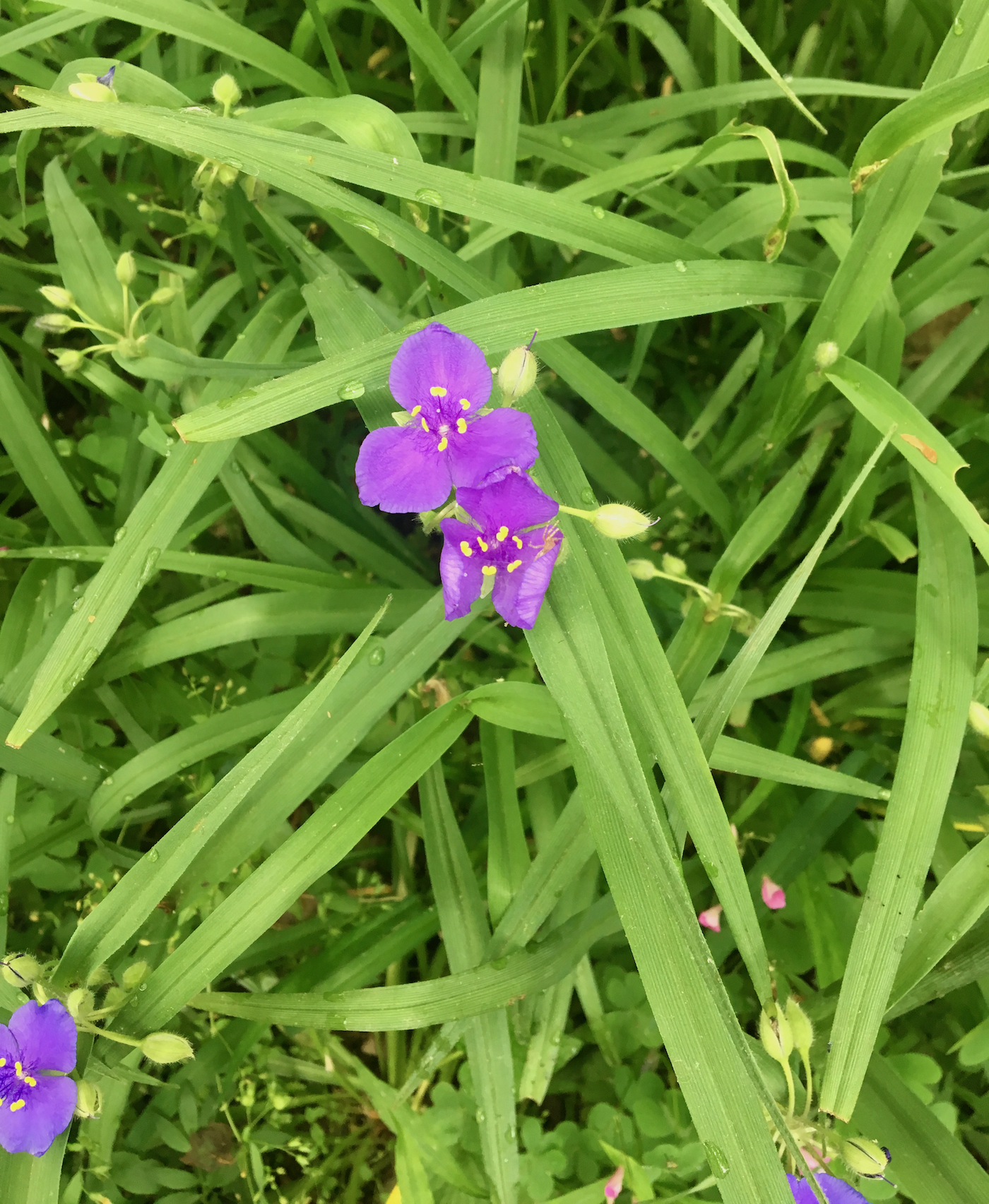NC Native Plant Society:
Plant Details
Tradescantia virginiana
Virginia Spiderwort
Scientific Name: |
Tradescantia virginiana |
|---|---|
Genus: |
Tradescantia |
Species Epithet: |
virginiana |
Common Name: |
Virginia Spiderwort |
Plant Type |
Herb/Wildflower |
Life Cycle |
Perennial |
Plant Family |
Commelinaceae (Spiderwort Family) |
Native/Alien: |
NC Native |
Invasive Status: |
(*Key) |
Size: |
1-3 ft. |
Bloom Color(s): |
White, Pink, Blue, Purple, Violet |
Light: |
Sun - 6 or more hours of sun per day, Part Shade - 2 to 6 hours of sun per day |
Soil Moisture: |
Dry, Moist |
Bloom Time: |
April, May, June, July |
Growing Area: |
Piedmont, Sandhills, Coastal Plain |
Habitat Description: |
Nutrient-rich forests and woodlands. Rare in NC but can occur in large colonies where present especially in the Piedmont. |
Leaf Arrangement: |
Alternate |
Leaf Retention: |
Deciduous |
Leaf Type: |
Leaves veined, not needle-like or scale-like |
Leaf Form: |
Simple |
Life Cycle: |
Perennial |
Wildlife Value: |
Important for Wildlife |
Landscape Value: |
Suitable for home landscapes |
State Rank: |
S2: Imperiled, S3: Vulnerable (*Key) |
Global Rank: |
G5 - Secure (*Key) |
State Status: |
SR-O: Significantly Rare: Other (*Key) |
|
A branching, clump-forming perennial with linear leaves that form a sheath at the base. Principal leaf blades and bracts beneath the flowers not so wide as those of Zigzag Spiderwort. Emily Allen Wildflower Preserve, Forsyth Co., NC
Lisa Lofland Gould |
|
Links: |
|
back to top
go to plant details search
go to plant images search
go to gallery home
back to Initial t Gallery
back to orchids
back to Carnivorous Plants
back to Trilliums




